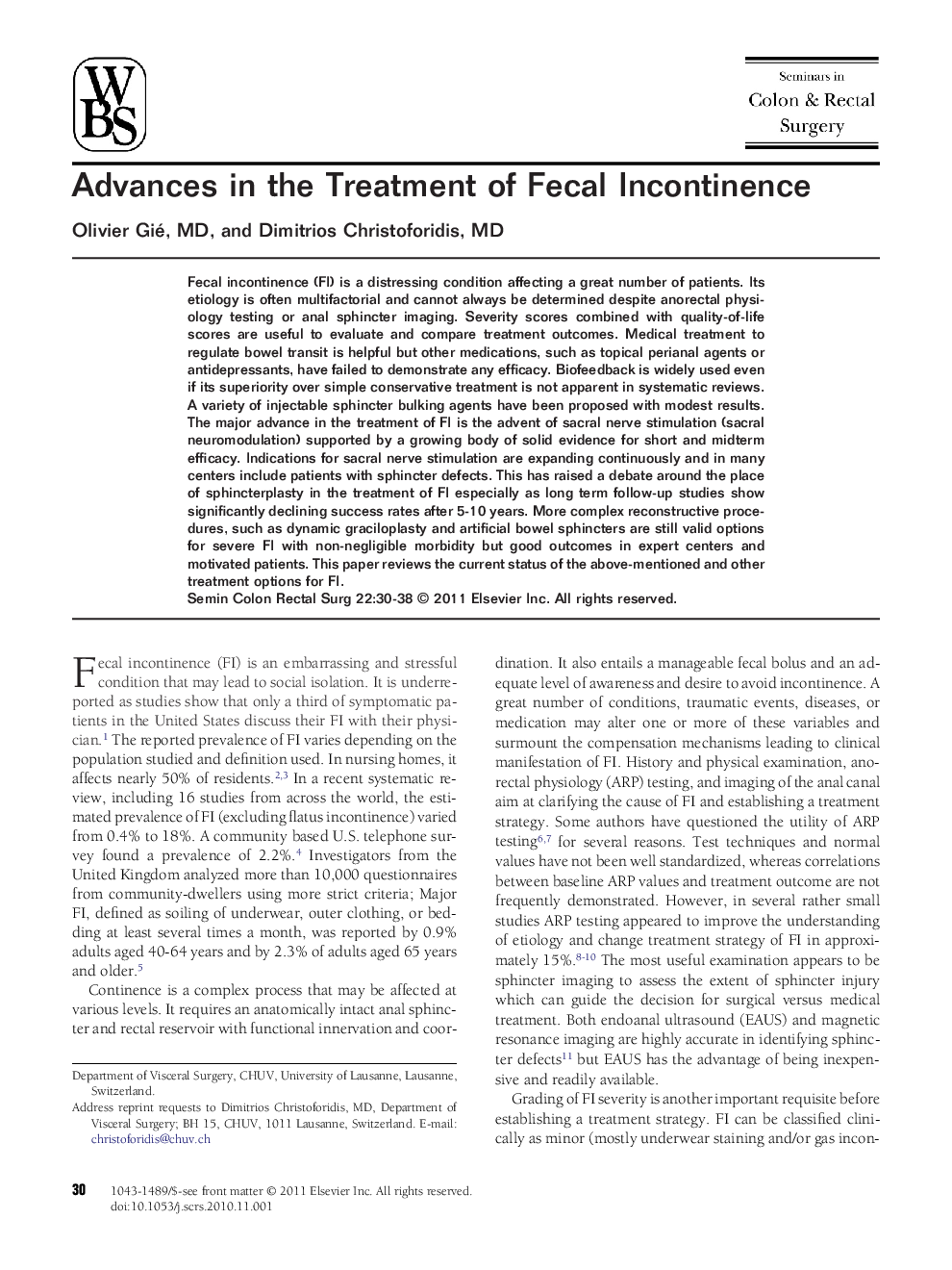| Article ID | Journal | Published Year | Pages | File Type |
|---|---|---|---|---|
| 3319467 | Seminars in Colon and Rectal Surgery | 2011 | 9 Pages |
Abstract
Fecal incontinence (FI) is a distressing condition affecting a great number of patients. Its etiology is often multifactorial and cannot always be determined despite anorectal physiology testing or anal sphincter imaging. Severity scores combined with quality-of-life scores are useful to evaluate and compare treatment outcomes. Medical treatment to regulate bowel transit is helpful but other medications, such as topical perianal agents or antidepressants, have failed to demonstrate any efficacy. Biofeedback is widely used even if its superiority over simple conservative treatment is not apparent in systematic reviews. A variety of injectable sphincter bulking agents have been proposed with modest results. The major advance in the treatment of FI is the advent of sacral nerve stimulation (sacral neuromodulation) supported by a growing body of solid evidence for short and midterm efficacy. Indications for sacral nerve stimulation are expanding continuously and in many centers include patients with sphincter defects. This has raised a debate around the place of sphincterplasty in the treatment of FI especially as long term follow-up studies show significantly declining success rates after 5-10 years. More complex reconstructive procedures, such as dynamic graciloplasty and artificial bowel sphincters are still valid options for severe FI with non-negligible morbidity but good outcomes in expert centers and motivated patients. This paper reviews the current status of the above-mentioned and other treatment options for FI.
Related Topics
Health Sciences
Medicine and Dentistry
Gastroenterology
Authors
Olivier MD, Dimitrios MD,
